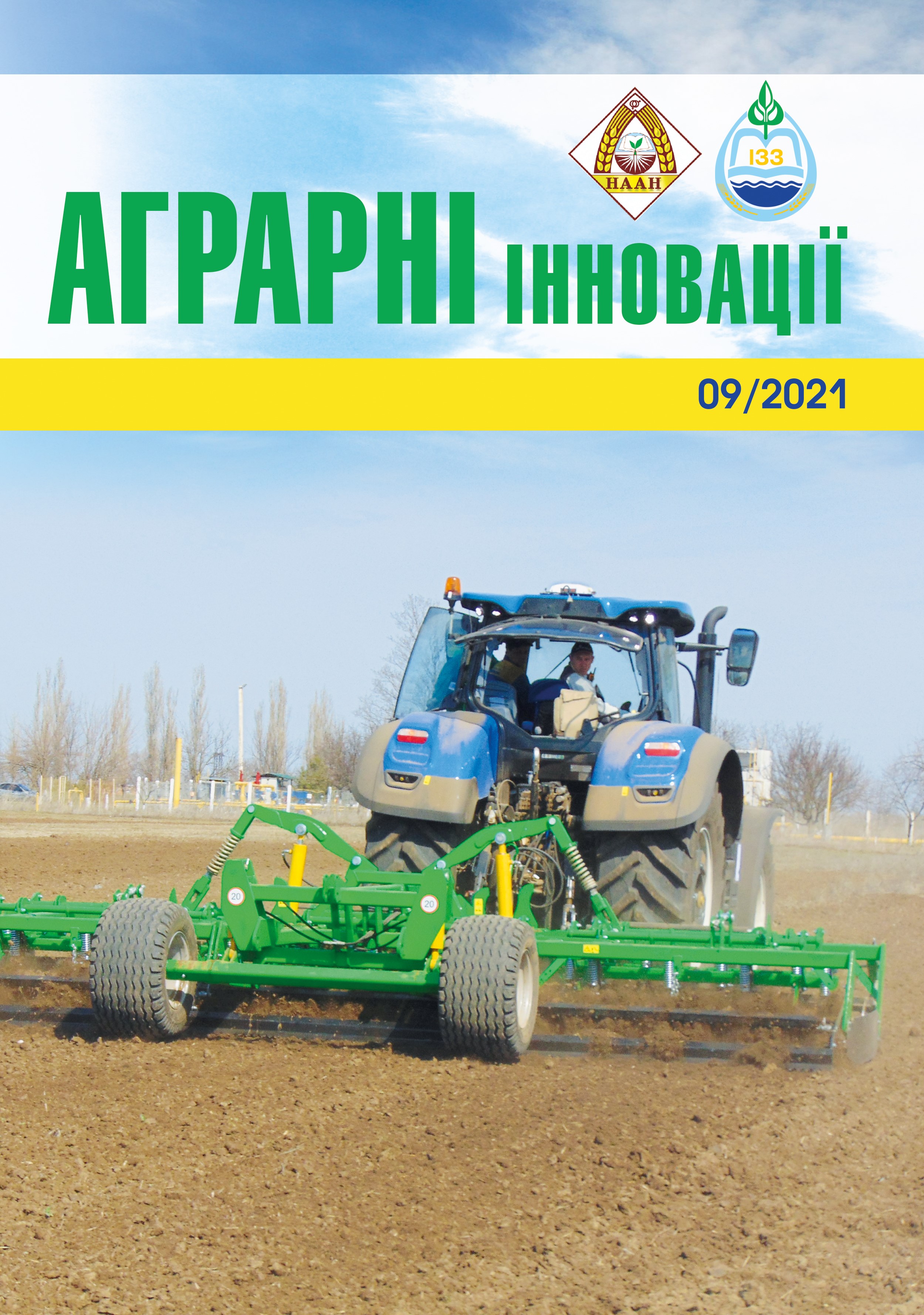The specifics of the balance of fertilizer elements under hop plantations
Abstract
Purpose. To find out the effects of different fertilizer systems under their long-lasting application on the removal of nitrogen, phosphorus and potassium by a hop plant as well as on the formation of balance of nutrient substances in sod˗podzol sandy loam soil of Polissia. Methods: field, laboratory, statistical, analytical, computational and comparative. Results. It was established that under the systamatic application of minaral fertilizers (N180P60K200) the hop cones yield increases by 0,75 and 1,1 t/ha, and the “principal products – by-products” correlation ratio is formed at a rate of 1,15 and 0,97 depending on hop variety. Additional application of manure improves the productivity indices by 15,2 and 23,9 %, but degrades the correlation – 1,22 and 1,08 respectively. The simultaneous application of manure and N180P60K200 resulted in the highest indices of NPP content both in hop cones and in the footstalks with leaves. According to the systems of ferilization, the removal rate varied for nitrogen within 323–486 kg/ha, for phosphorus – within 138–205 kg/ha, for potassium – 238–399 kg/ha during a 4-year period. During this period the amount of applied ferilizers increased: nitrogen – 720–1520 kg/ha, phosphorus – 240–640 kg/ha, potassium – 800–1760 kg/ha. The peculiar role of organic fertilizers (the manure) as the source of nutrient elements is worth mentioning. Their annual application has a significant impact on the formation of balance. Conclusions. Thus, a total level of of balance intencity in terms of nitrogen, phosphorus and potassium in all fertilizer varients, irrespective of the variety, increases – N 199–373 %, P 161–342 %, K 277–562 %. It testifies to an overuse and practically irrational application of fertilizers (according to current rates) as well as to the necessity of resolving the fertilizers rates. The experimental data allowed to specify the indices of removal of nutrient elements by hop varieties yield.
References
2. Алексеев Е.К. Зеленое удобрение в Нечерноземной зоне. Москва: Сельхозиздат, 1989. 291 с.
3. Балюк С.А., Носко Б.С., Шимель В.В. та ін. Оптимізація живлення рослин у системі факторів ефективної родючості ґрунтів. Вісник аграрної науки. 2019. № 3. С. 12–19.
4. Бердников А.М. Зеленое удобрение – биологизация земледелия, урожай. Черниговское НПО «Элита», 1992. 189 с.
5. Довідник з агрохімічного і агроекологічного стану ґрунтів України / Носко Б.С. та ін.; за ред. Б.С. Носко, Б.С. Прістера, М.В. Лободи. Київ : Урожай, 1994. 336 с.
6. Мазур Г. А. Відтворення і регулювання родючості легких ґрунтів. Київ : Аграрна наука, 2008. 308 с.
7. Москаленко А. М. Біологічні та економічні чинники розширеного відтворення родючості ґрунтів Полісся. Органічне виробництво і продовольча безпека : матеріали ІІ Міжнар. наук.-практ. конф. Житомир : Полісся, 2013. С. 83–92.
8. Петербургский А.В. Круговорот и баланс питательных веществ в земледелии. Москва : Наука, 1979. 168 с.
9. Польовий В.М. Оптимізація систем удобрення у сучасному землеробстві: монографія. Рівне: Волинські обереги, 2007. 320 с.
10. Прянишников Д.Н. Избранные сочинения: Т.1. Агрохимия. Москва: Колос, 1965. 767 с.
11. Тараріко О.Г. Проблеми сучасного землеробства і охорони ґрунтів на Україні: аналіз, стан і пропозиції. Вісник аграрної науки. 1996. № 1. С. 15–20.
12. Цвей Я.П. Родючість ґрунтів і продуктивність сівозмін. Київ: Компринт, 2014. 413 c.






